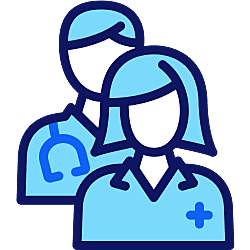Side Effects of Saxenda

Medically reviewed by
Dr Babak AshrafiLast reviewed: 27 Jun 2022
Saxenda is a medication you inject under your skin once a day to help you lose weight. As with all medicines, it is possible to get side effects. Whether or not you will get side effects and how they will affect you varies from person to person.
When you start taking Saxenda, your doctor will prescribe a low dose so your body can adjust slowly and you can monitor any side effects.
What is Saxenda?
Saxenda is a weight loss medication that you inject into your body, under the skin, once a day. The active ingredient in Saxenda is liraglutide. It helps you lose weight by acting on the receptors in the brain that control your appetite, making you feel fuller more quickly, so you eat less.
Saxenda is a prescription medicine: you can only take it if a doctor prescribes it. You must also be on a weight loss programme involving diet changes and regular exercise when taking Saxenda.
Start your journey with Wegovy
Side effects of Saxenda
Like all medications, it is possible to get side effects when you take Saxenda. Whether you get side effects and how severely they affect you varies from person to person.
Side effects are listed in categories depending on how many people record the symptoms. This gives you a good idea of how common or rare the side effects are.
As Saxenda impacts your digestive system, many of the common side effects that people report affect your stomach, bowels and a general feeling of wellness.
Common side effects
Very common side effects of taking Saxenda may impact more than 1 in 10 people and usually clear up within a few days of starting to take the medication:
- feeling or being sick
- diarrhoea
- constipation
- headache
If you are feeling or being sick, try the following:
- eat foods with water in them (like soup)
- eat bland foods (like crackers)
- don’t lie down after you eat
- take fresh air after you eat
Common side effects may affect up to 1 in 10 people and include:
- skin reaction at the injection site
- tiredness
- difficulty sleeping
- dizziness
- stomach pain
- heartburn
- flatulence
- change of taste
- dry mouth
- low blood sugar (called hypoglycemia)
- change in enzyme levels in your blood (this can only be picked up with a blood test)
- gallstones
Uncommon side effects may affect up to 1 in 1000 people and include:
- dehydration
- inflamed gallbladder
- faster pulse
- feeling generally unwell
- allergic reaction
- reduced kidney functioning
- acute kidney failure
The patient information leaflet has more information on the side effects of taking Saxenda.
Are there any serious side effects?
There can be serious side effects of taking Saxenda. These include:
- allergic reaction: problems breathing or swallowing, swelling of your lips, tongue or throat, fainting or feeling dizzy, severe rash or itching, very rapid heartbeat
- inflammation of the pancreas (pancreatitis): symptoms include severe stomach pain, with or without being sick; sometimes, the pain can be felt in the back as well
- gallbladder problems: symptoms include pain in your upper stomach, fever, jaundice and clay coloured poo
- low blood sugar: can impact people with type 2 diabetes especially; symptoms include sweating, shaking, weakness, dizziness, confusion, hunger, and a fast heartbeat
- increased heart rate while at rest: tell your doctor if this lasts for several minutes
- kidney problems: caused by dehydration from being sick or having diarrhoea after taking Saxenda
- depression or thoughts of suicide: pay attention to any sudden changes in your mood and talk to your doctor as soon as possible
If you have signs of an allergic reaction or pancreatitis, you must get immediate medical help by calling 999 or going to A&E at a hospital.
Are there any long term side effects?
If you are affected by one of the serious side effects listed above, these can have a long term impact on your health.
Long term side effects are not common. A 2017 review of evidence into using Saxenda for weight loss found that the most common side effects were experienced at the start of taking the medication and went away after a few days.
Will I get withdrawal symptoms if I stop taking Saxenda?
Saxenda is not an addictive medication, so you will not get withdrawal symptoms when you stop taking it. However, the changes in the hunger hormones in your body may impact your digestive system for a few days and can cause sickness.
What happens if I stop taking Saxenda suddenly?
Talk to your doctor before you stop taking Saxenda. While many people stop taking Saxenda suddenly without any problems, this can vary depending on your health situation.
Some people who stop taking Saxenda without gradually reducing their dose, feel sick or are sick. This is because their digestive system is adjusting to the changes in the hunger hormones.
When should I see a doctor about side effects?
See a doctor immediately if you have an allergic reaction to Saxenda. Symptoms of an allergic reaction include:
- increased heartbeat
- difficulty breathing and swallowing
- swelling of the face or mouth
- widespread rash
It is also essential to get immediate medical attention if you think you may have pancreatitis. Symptoms include:
- severe pain in the stomach
- feeling and being sick
- fever or chills
- fast heartbeat
- shortness of breath
- jaundice (yellowish colour to skin and eyes)
If you are experiencing milder side effects but they are not clearing up or are impacting your daily life, talk to your doctor. They can advise you on how to manage the side effects and may recommend a different weight loss medication for you.

Dr Babak Ashrafi Clinical Lead for Service Expansion
Accreditations: BSc, MBBS, MRCGP (2008)
Babak studied medicine at King’s College London and graduated in 2003, having also gained a bachelor’s degree in Physiology during his time there. He completed his general practice (GP) training in East London, where he worked for a number of years as a partner at a large inner-city GP practice. He completed the Royal College of GPs membership exam in 2007.
Meet our doctorsLast reviewed: 27 Jun 2022
-
Saxenda side effects Saxenda.com [accessed 30 May 2022]
-
Saxenda side effects Drugs.com [accessed 30 May 2022]
-
Side Effects Associated with Liraglutide Treatment for Obesity as Well as Diabetes NCBI [accessed 30 May 2022]
-
Saxenda 6 mg/mL solution for injection in pre-filled pen (2021) EMC [accessed 30 May 2022]









